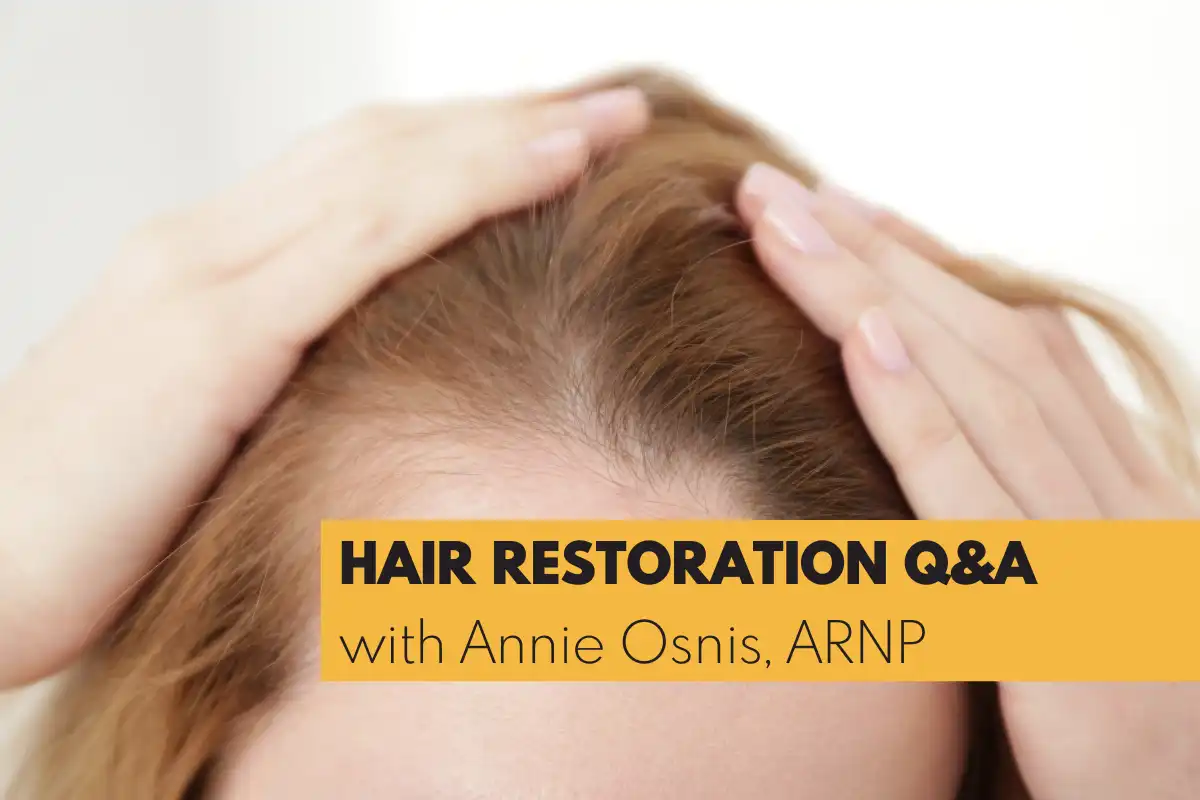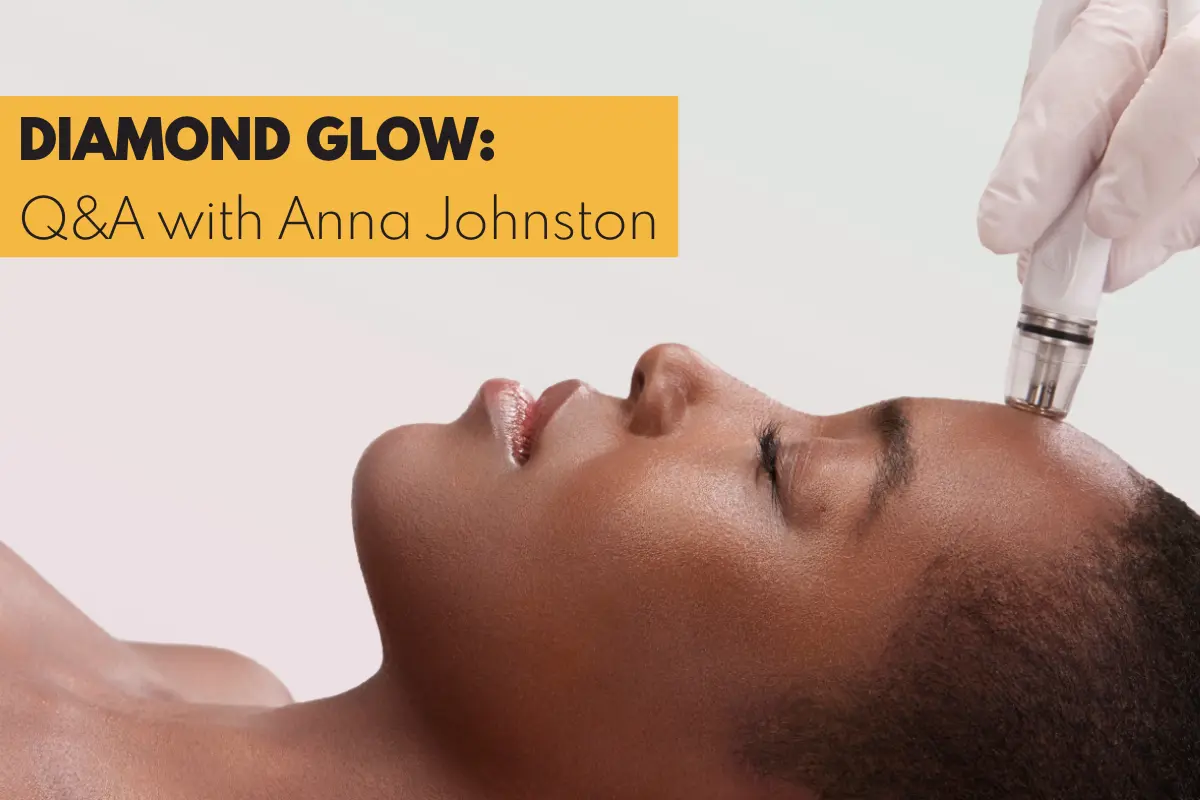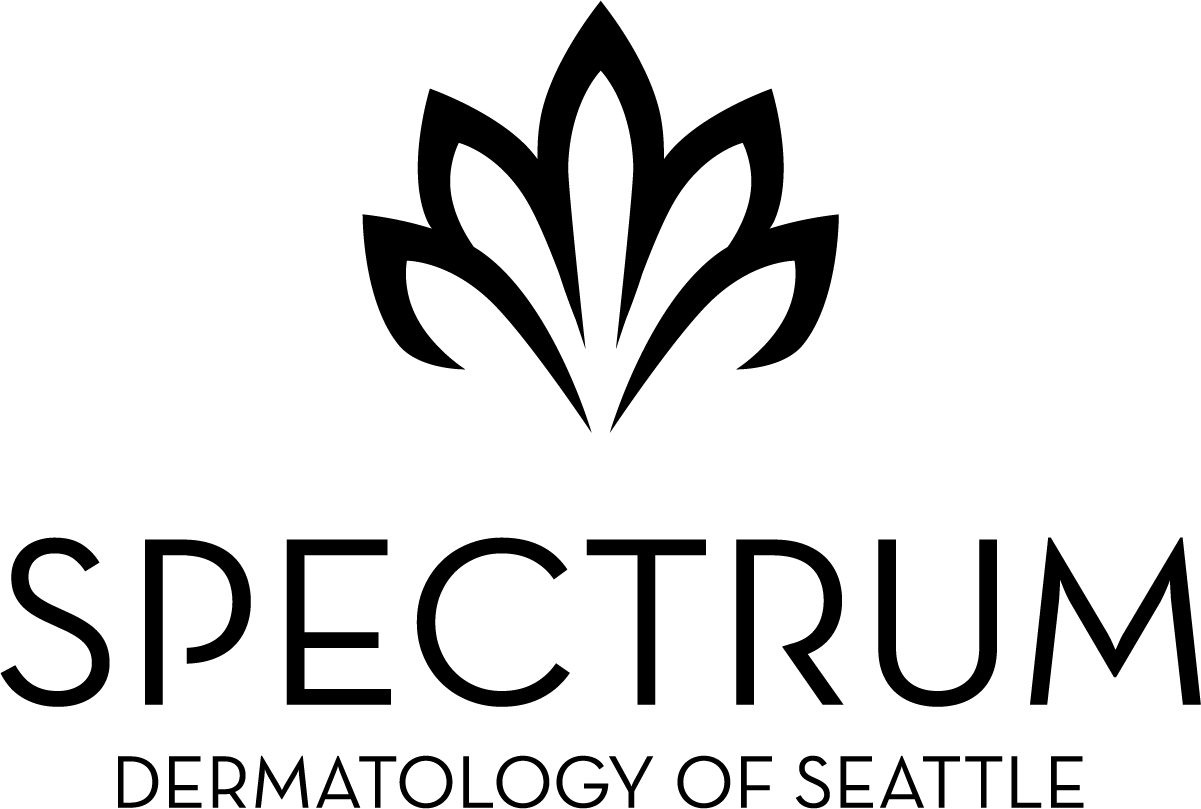
What is the first step when I visit Spectrum Dermatology for concerns about hair loss?
We recommend beginning the hair restoration journey by visiting our team of medical dermatology providers. It is crucial to conduct a thorough root cause analysis (no pun intended) of the hair loss. There are many different causes of hair loss. Therefore, identifying the specific reason for hair loss will enable the provider to treat the underlying cause and select an appropriate type of hair restoration protocol.
What can I expect during my initial consultation for hair loss at Spectrum Dermatology?
During your initial visit with your medical provider, we will obtain a detailed personal and family medical history, review your medications, and discuss any allergies you may have. We will review the social history, as well as other potential stressors that may contribute to hair loss or receding hairline. We may obtain photographic images of the hair loss pattern for our records. Frequently, we order a hair loss blood panel to investigate intrinsic causes of hair loss. We may initiate hair loss treatment, which varies based on individual cases, ranging from over-the-counter therapies (such as vitamin supplements and hair restoration serums) to prescription-strength options (topical serums or pills).
How do we monitor progress and adjust my hair restoration treatment plan over time?
During subsequent visits, we will discuss the previously completed workup. If you were prescribed medication, we will discuss your response to your treatment. Photographic images may be obtained for comparison. At this time, you may be referred to our aesthetic team to discuss hair restoration options, such as Platelet-Rich Plasma Matrix (PRFM) injections, which harness your body's ability to utilize stem cells for hair restoration.
What types of hair loss do you commonly treat at Spectrum Dermatology?
At Spectrum Dermatology of Seattle, we treat a wide range of hair loss conditions, including autoimmune alopecia, male and female pattern alopecia, stress-related alopecia, and age-related alopecia, among others.
What treatment options do you offer for hair restoration, and how do you determine which one is best for me?
Customizing the treatment to one’s individual needs is a key to success. The most critical component in the process is addressing and treating ongoing hair loss. The process of restoration will be based on the hormonal background, type, and severity of hair loss, and practical applications such as compliance and adherence to the treatment.
How long does it typically take to see results from hair restoration treatments?
Hair restoration is a gradual process with results that unfold over time. Your provider will discuss the odds of success with every treatment prescribed. One common denominator is that it takes three to six months for the hair to regrow.
Is hair restoration a permanent solution, or will I need ongoing treatment?
In some cases, hair restoration treatment might be a permanent solution. For example, stress causes hair follicles to enter a resting phase, rather than progressing to the growing phase, which is necessary for producing new hair. When stress is alleviated and the patient responds positively to the treatment, this may be a permanent solution. However, the vast majority of hair restoration cases require ongoing maintenance in the form of nutraceutical support (hair restoration supplements), topical serums, and PRFM boosts, which are administered once or twice a year.
What role does patient commitment play in the success of hair restoration treatments?
Patient commitment is a key to success. Your environment is just as important as your genetic programming. We cannot change our genetic composition, but we can alter our environment in our favor. Your aesthetic provider will coach and guide you on lifestyle modifications to maintain the health of your hair. The bottom line is that hair restoration is not something your provider does to a patient, but rather something that your provider does with the patient.











